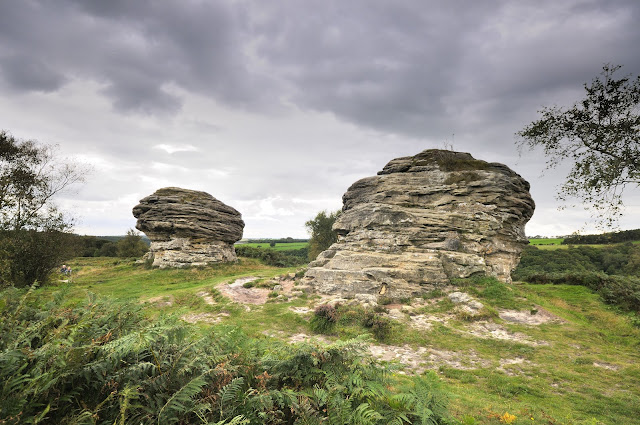The Bridestones, Rievaulx and Hutton-le-Hole

Over a couple of days we explored a few places in the area, as we were new to North Yorkshire. What a fabulous county!. There is so much history and amazing and varied history up this part of England. I think we need longer than our week Anyway, off to Dalby Forest to explore, with one particular place in mind The Bridestones - a series of "outcrops of millstone grit rocks and boulders which are ½ a mile long. Amongst these rocky outcrops are a number of odd-shaped formations that have been caused by weather-related erosion over thousands, if not millions of years. One huge boulder in particular, known as ‘The Great Bridestone’ is fantastically shaped at its base, looking like an up-turned bottle, as if it might topple over at any moment. There are a number of myths and legends associated with The Bridestones, many of these going back to the mists of time. More recently, perhaps, there are a number of local traditions that have become connected to the place and its ...



